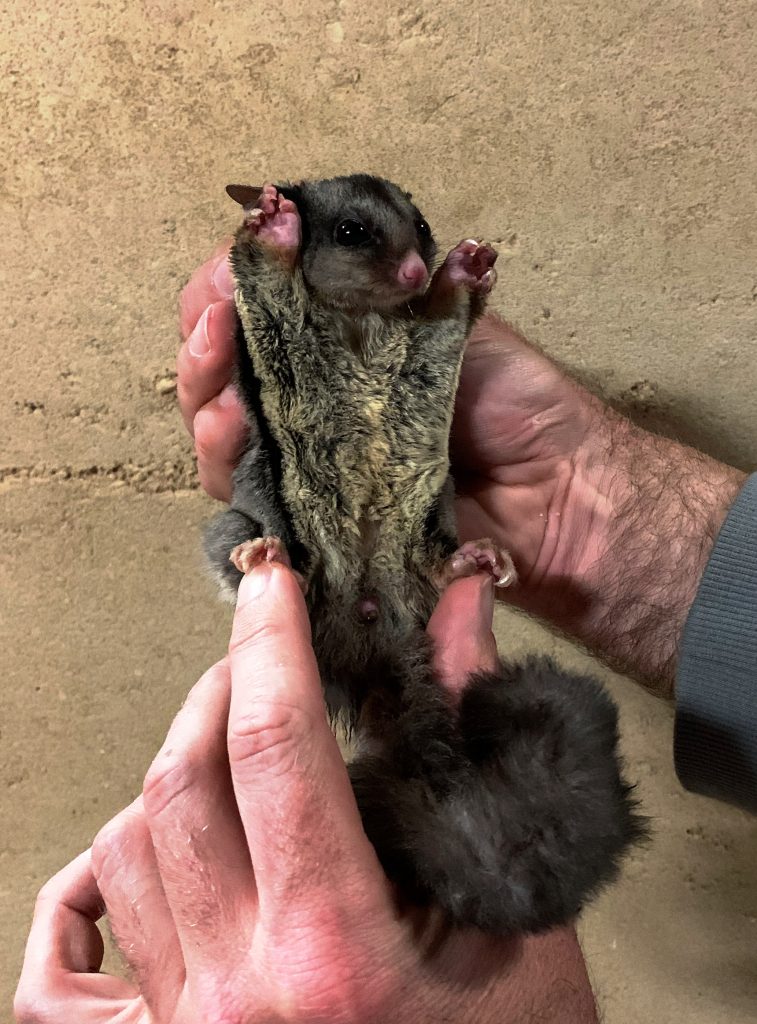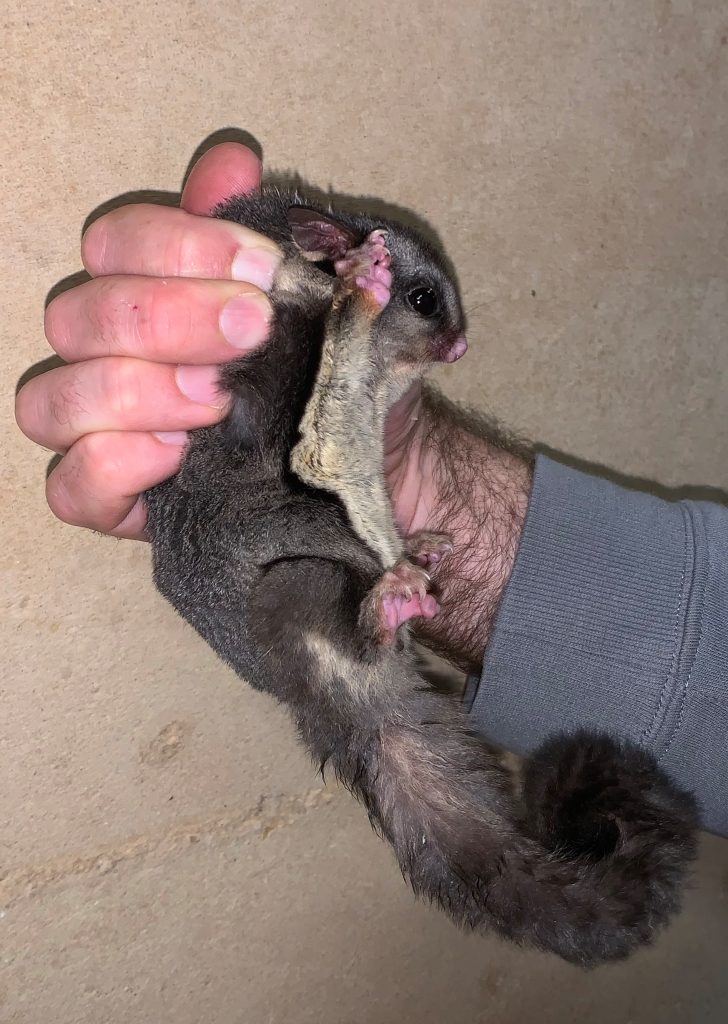Another long, fluffy ‘tale’ from the recycling bin!
In what has been an interesting year on a personal level for wildlife encounters, the trend continues – with the sugar glider (Petaurus notatus) in the spotlight this time around!
Before we go on, a quick word on taxonomy. Like the feathertail glider we reported on back in March, the sugar glider has also undergone recent taxonomic review. As a result of genetic work, what used to be known as the widespread sugar glider has been split into three genetically and physically distinct species. The species found in my neck of the woods turns out to be the one with the widest distribution from south-eastern South Australia, much of Victoria, New South Wales, and Queensland (see map below). This species has been given the common name of Krefft’s glider (P. notatus) after German-Australian zoologist Gerard Krefft. A northern species, P. ariel, is known as the savannah glider, while the original sugar glider name now refers to the species that occurs in coastal NSW and southern Queensland (P. breviceps). Here is an interesting Conversation article about the discovery and this link will take you to the journal article of the study.
Ok, now back to the story…
First up, a couple of months ago my son Caleb found a dead male glider just outside the fence that encloses our vegie garden. There were no signs of any injury which rules out being attacked by an owl, so the cause of death is a mystery. Although it is always a shame to find any of our native wildlife dead like this, it it did give us a chance to have a closer look at the features of this beautiful species – noting that Krefft’s gliders are normally pretty feisty critters which can make live ones awkward to handle.
This one ended up in the freezer because it is also a perfect specimen for lodgement and preservation with the museum. So if you find anything unusual or interesting, you know what to do! – wrap it in tissue paper, bag it up securely in a zip-lock plastic bag, pop it in the freezer and then send us an email and/or make contact with your state museum to confirm identification and to arrange lodgement. Don’t forget to put a note in the bag written in pencil, with the date. location and collector’s name – so that all the key details are recorded with the specimen.
Below you will see the gliding membrane (i.e. flap of skin) between the front and back legs that allows the species to glide from tree to tree through the forest, and their strong claws that allow them to climb and move around the tree canopy with great dexterity.
But that was not all… because just a week ago, I got a message from my daughter Correa informing me that there was something rummaging around in our recycling bin – yet again – and that apparently it was bigger than the yellow-footed antechinus we’d encountered there previously. When I went for a look, sure enough, sheltering inside a yoghurt container (quite possibly looking for a sweet snack) was this little guy – another Krefft’s glider!


.
So it seems that sometimes lightning does strike twice, making me wonder just how close by the nearest den in a tree hollow must be, for these two gliders to be found so close to our house.
Thankfully too, this time around the story has a happy ending. Just before dusk, here is some footage of me releasing the glider – right near where it was found.
Aren’t they just magnificent little creatures…?!


